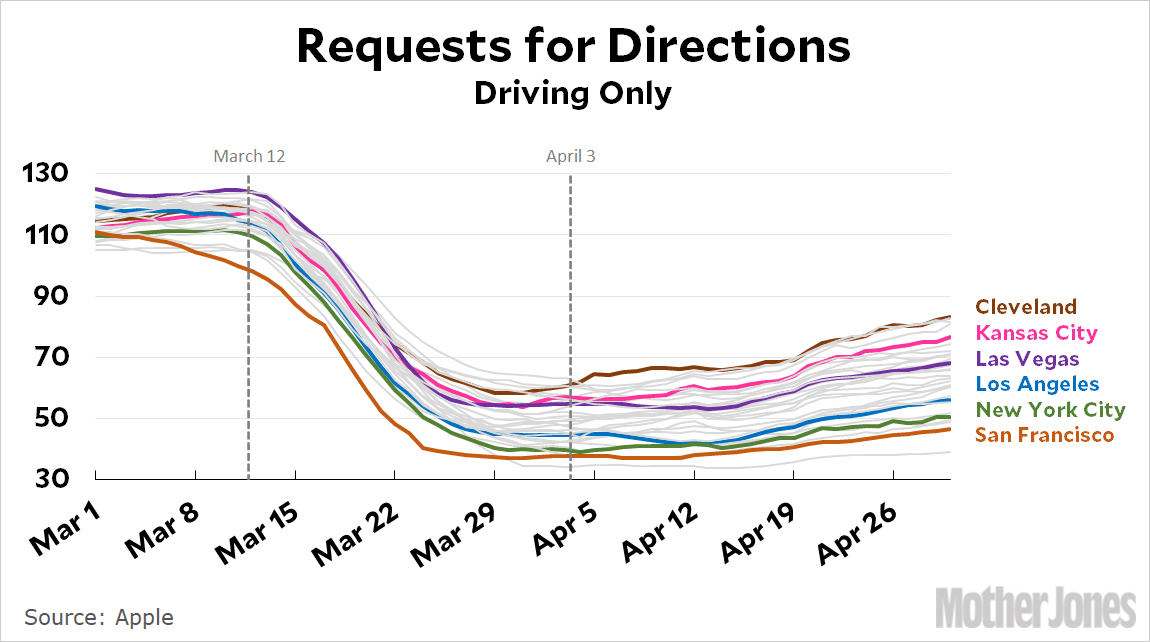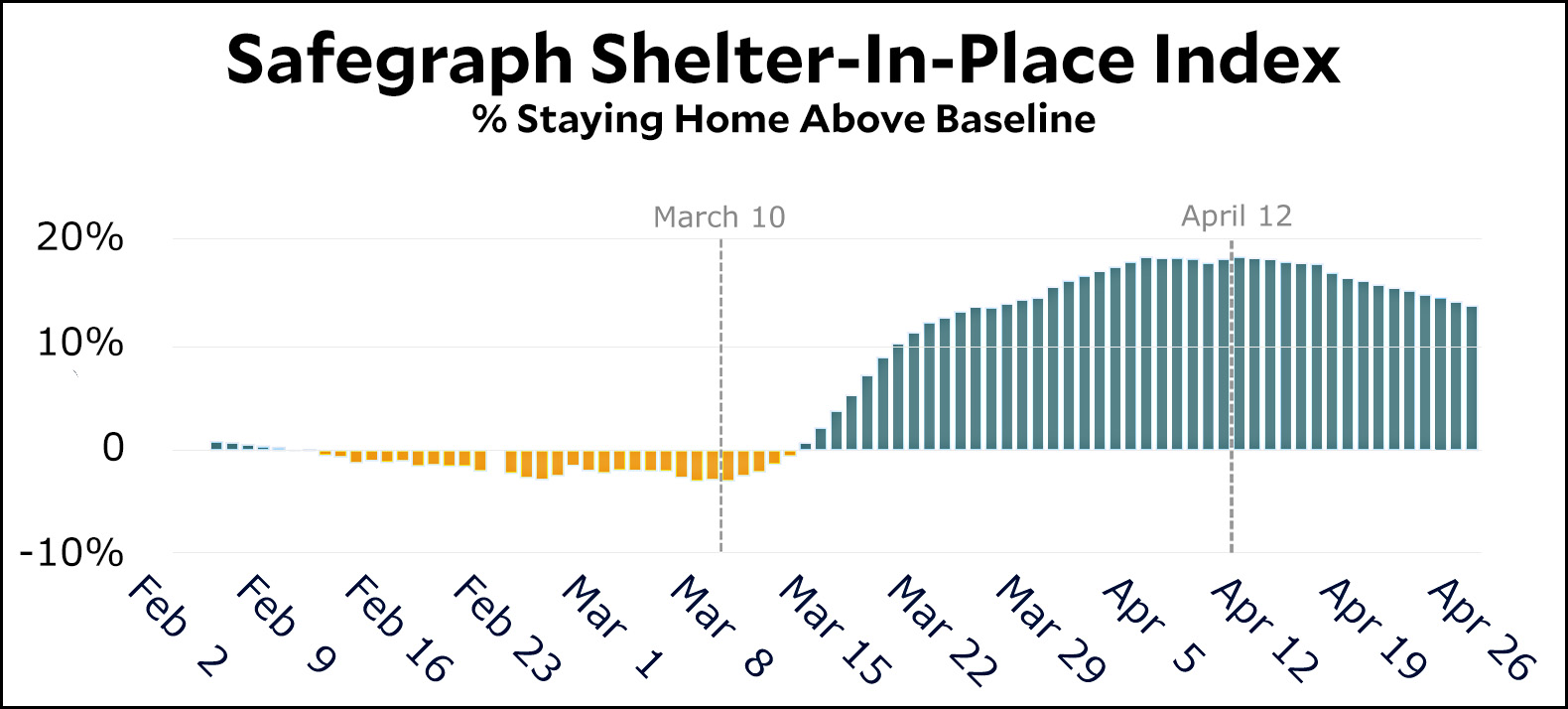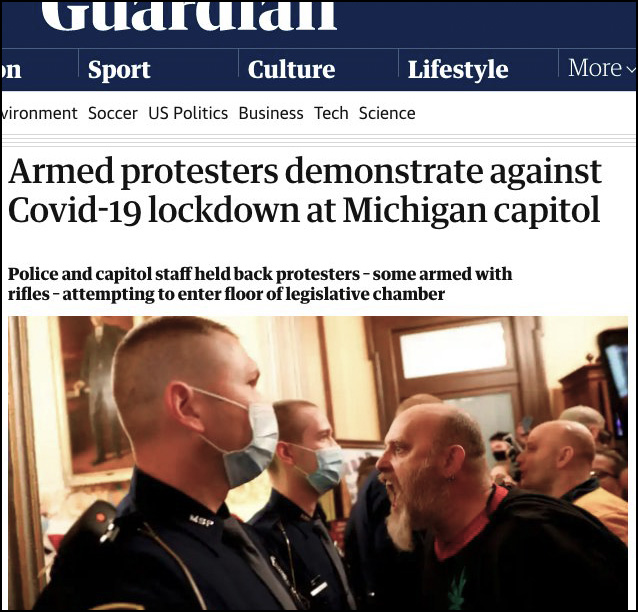A couple of weeks ago I put up a chart based on data from Apple showing how often people asked their iPhones for driving directions. If you assume that this is a rough proxy for the amount of driving people are doing, it shows us how seriously people are taking lockdown orders. Here’s what it looks like for about 30 American cities:

As you can see, driving plunged considerably starting around March 12, which makes sense. It hit bottom toward the end of the month and stayed there for a few days, but during the first week of April it started to creep up again. It’s gone up about 40 percent since then.
The reason I checked on this is because I got some takeout for lunch on Friday and noticed that the streets and parking lots seemed fairly busy. Not pre-coronavirus busy, but certainly busier than a couple of weeks ago. And so they are. Here’s another piece of evidence:

This chart shows the change in the number of people who are staying at home. For each county, there’s a baseline number, and the bars show how much that’s changed. Overall, it peaked around April 12, when nearly 20 percent more people were staying home than usual. But ever since then it’s been dropping.
I feel like I’m hardly one to talk, since lockdown orders barely affect me at all. Still, these two charts suggest that Americans were able to comply with lockdowns for only about a month before they started to take them less and less seriously. Europeans mostly seem to have done better even though their lockdowns were more severe, and our willingness to sacrifice for only a month speaks poorly for both our political system and our innate stores of self-discipline. Now, a mere few weeks after weariness started to set in, we have this:

These are among the folks that Donald Trump called “good people” who just needed to have a little something done for them. The truth, of course, is that these are well-organized GOP protesters responding to Trump’s own order to “liberate” blue states from Democratic governors. Even the simplest and most obvious responses to the pandemic have been turned into partisan battles:
For progressives, masks have become a sign that you take the pandemic seriously and are willing to make a personal sacrifice to save lives. Prominent people who don’t wear them are shamed and dragged on Twitter by lefty accounts. On the right, where the mask is often seen as the symbol of a purported overreaction to the coronavirus, mask promotion is a target of ridicule, a sign that in a deeply polarized America almost anything can be politicized and turned into a token of tribal affiliation.
This is disgraceful beyond imagining. Conservatives have turned the act of taking a pandemic seriously into a partisan skirmish in the culture wars. A pandemic. And because of this, people are driving more, they’re leaving their houses more, and they’re refusing to wear masks. How can this be happening?

















